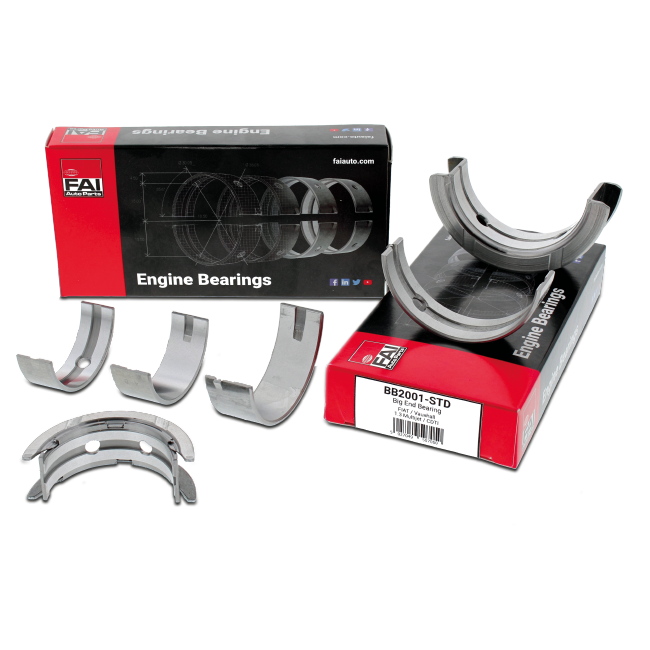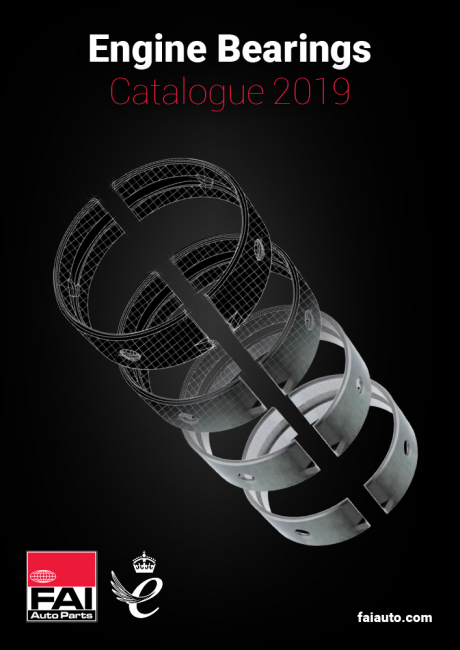


Engine bearings are one of the most important parts of the engine and require the utmost precision during production. High quality engine bearings can extend the life of an engine. It is with this in mind that FAI have developed their range of engine bearings. Quality testing of raw materials and random testing through the production process ensure that the finished product we put in our boxes is a perfect fit.
With over 30 years experience in engine repair, FAI offer a wide variety of parts for engine top and bottom repair. Introduced in 2018 is the FAI engine bearing range which compliments our piston and ring product offer with 98% coverage. The range includes over 460 part numbers which is catalogued against no fewer than 25,000 applications or 3000 individual engine codes. All our engine bearings are packed in engine sets, so customers need only order a single box to effect a repair.
In an effort ot make the products easy to identify FAI have selected part number prefixs that reflect the type of product;
Bearing Manufacturing:
Our Engine Bearings are manufactured to exacting tolerances to ensure a reliable long lasting fit.
Micron tolerance machining and precision measurement systems deliver the highest level of accuracy, to consistently maintain key characteristics like wall thickness, crush and lubrication design features.
Location in the Engine:
Bearings can be found in a number of locations across the engine:
Cylinder Block/Bottom End
Cylinder Head/Top End
Bearing Materials/Structure:
Utilising several layers of unique grade materials.
Depending on the application, there can be a drastic variation in chemical material used.
Higher load engines require a larger share of overlay materials and a smaller share of Base layer materials.
Medium-Low load engines require a larger share of Base layer, with less of a requirement for sophisticated Overlay layers.
Typical thickness 0.0005”/0.013MM